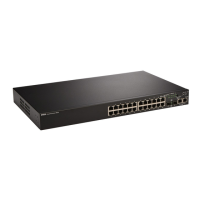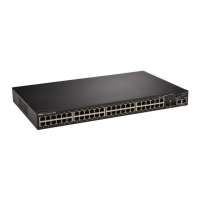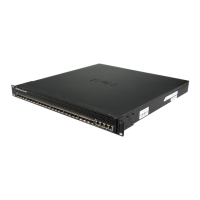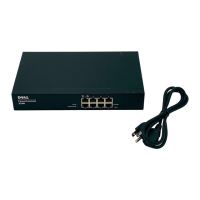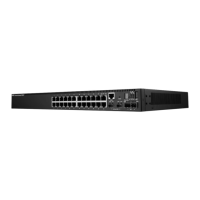Configuring Switch Information 351
Configuring VLANs
VLANs are logical subgroups with a LAN created via software, rather than defining a hardware solution.
VLANs combine user stations and network devices into a single unit, regardless of the physical LAN
segment to which they are attached. VLANs allow network traffic to flow more efficiently within
subgroups. VLANs managed through software reduce the amount of time network changes, additions,
and moves are implemented.
Click a link below to access on-line help for the indicated screen.
VLANs have no minimum number of ports, and can be created per unit, per device, per stack, or any
other logical connection combination, as VLANs are software-based and not defined by physical
attributes.
VLANs function at Layer 2 level. Since VLANs isolate traffic within the VLAN, a router working at the
Layer 3 protocol level is needed to allow traffic flow between VLANs. Layer 3 routers identify segments
and coordinate with VLANs. VLANs are Broadcast and Multicast domain. Broadcast and Multicast
traffic is transmitted only in the VLAN in which the traffic is generated.
VLAN tagging provides a method of transferring VLAN information between VLAN groups.
VLAN tagging attaches a 4-byte tag to packet headers. The VLAN tag indicates to which VLAN the
packet belongs. VLAN tags are attached to the VLAN by either the end station or by the network device.
VLAN tags also contains VLAN network priority information.
QinQ tagging allows network managers to add an additional tag to previously tagged packets. Customer
VLANs are configured using QinQ. Adding additional tags to the packets helps create more VLAN space.
The added tag provides VLAN ID to each customer, this ensures private and segregated network traffic.
The VLAN ID tag is assigned to a customer port in the service providers network. The designated port
then provides additional services to the packets with the double-tags. This allows administrators to
expand service to VLAN users.
Combining VLANs and GVRP allows network managers to define network nodes into Broadcast
domains. Broadcast and Multicast traffic is confined to the originating group.
To open the VLAN page, click Switch → VLAN in the tree view.
This section contians the following topics:
• "Defining VLAN Membership" on page 352
• "Defining VLAN Ports Settings" on page 357
• "Defining VLAN LAGs Settings" on page 359
• "Binding MAC Address to VLANs" on page 362
• "Defining VLAN Protocol Groups" on page 364
• "Adding Interfaces to Protocol Groups" on page 367
• "Configuring GVRP Parameters" on page 369
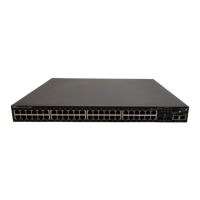
